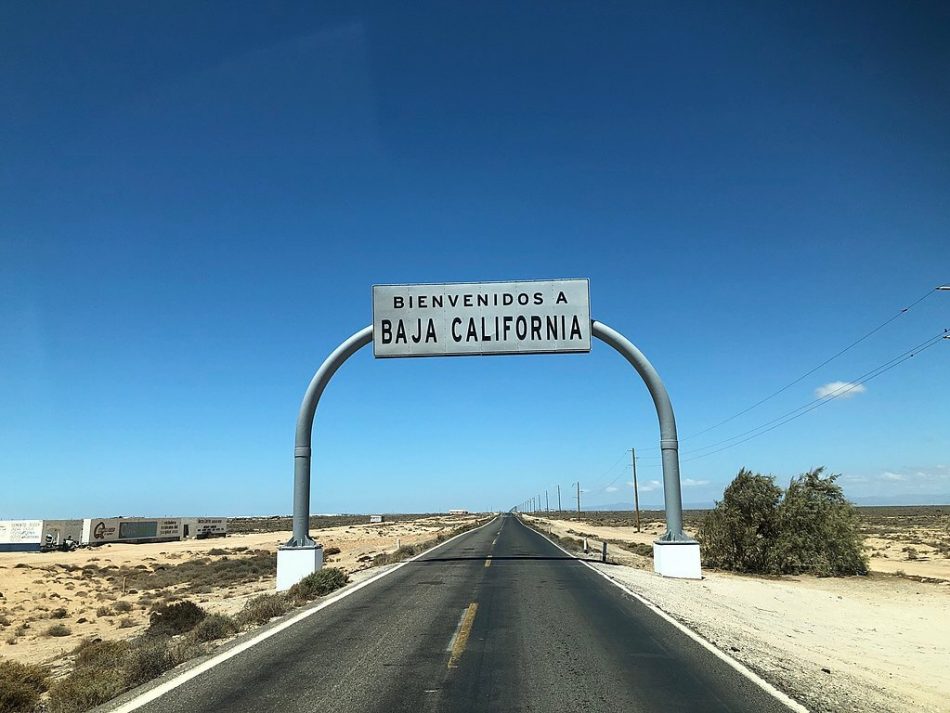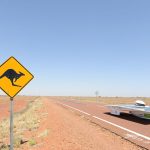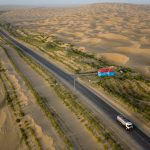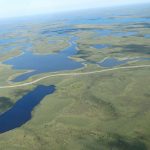The Federal Highway 1 (Transpeninsular Highway) is a federal highway in Mexico that crosses the Baja California Peninsula, passing through the states of Baja California and Baja California Sur. The highway has a length of 1,711 kilometers (1,063 miles) and traverses the Baja California Peninsula from south to north, from Cabo San Lucas in the southernmost point to Tijuana in the north, near the border with the United States. The Mexican Federal Highway 1 becomes Interstate 5 at the international border with the United States south of San Ysidro, California. Most of its length consists of two lanes. It lacks protections or guardrails, and the road surface is asphalted.
The Federal Highway 1 was built in the 1970s and became the main communication route for the Baja California Peninsula. It is also an important tourist route, offering visitors the opportunity to experience the natural beauty of the Baja California Peninsula. Along the highway, you will find beaches, mountains, deserts, and forests. The road also passes through several towns and cities, including Tijuana, Ensenada, La Paz, and Cabo San Lucas.
The Federal Highway 1 is a safe and well-maintained road. However, it is important to drive with caution as the road can be busy, especially during the summer months.
Places of interest along Federal Highway 1
- Tijuana: The largest city in the Baja California Peninsula, Tijuana, is an important tourist and commercial center. Visit the historic downtown of Tijuana, the Cathedral of Our Lady of Guadalupe, the Municipal Palace, and the Museum of the Californias. Take a stroll along Avenida Revolución, a street full of shops, restaurants, and bars. Visit Parque Morelos, a park with a lake, a zoo, and a botanical garden. Watch a Lucha Libre show, a form of Mexican professional wrestling.
- Ensenada: A coastal city with a beautiful bay, Ensenada is a popular destination for fishing, diving, and snorkeling. Take a walk along Ensenada’s Malecón. Visit the Ensenada Wine Museum, a museum that tells the story of wine in Mexico. Go fishing in the Pacific Ocean. Take a boat tour of Ensenada Bay.
- La Paz: The capital of the state of Baja California Sur, La Paz is a peaceful city with a beautiful historic downtown. Visit the Historical Museum of La Paz, a museum that tells the history of the city. Take a stroll through La Paz’s historic downtown, where you will find the Cathedral of La Paz, the Municipal Palace, and the Ángela Peralta Theater. Visit Espíritu Santo Island, an island with beaches, forests, and mountains. Take a boat tour of La Paz Bay. Go snorkeling or diving in the Sea of Cortez.
- Cabo San Lucas: A tourist city known for its beaches, nightlife, and golf courses. Visit Cabo San Lucas Beach, one of Mexico’s most famous beaches. Take a walk along Cabo San Lucas’ Malecón, a street with shops, restaurants, and bars. Visit the Arch of Cabo San Lucas, a natural stone arch. Go fishing in the Pacific Ocean. Take a boat tour of Cabo San Lucas Bay.
The Federal Highway 1 is a road that offers visitors the opportunity to experience the natural beauty and history of the Baja California Peninsula.
Federal Highway 1 Map
Federal Highway 1 Landscapes
In the north, the highway passes through the Sonoran Desert. There are also several mountain ranges in this region, including the Sierra San Pedro Mártir, which is the highest mountain in Baja California. As the highway progresses south, the landscape becomes more diverse. There are still deserts, but they are interspersed with valleys, mountains, and coastline. The Sierra de la Giganta is a major mountain range in this region. In the southern part of the peninsula, the highway passes through the Vizcaíno Desert. The highway also passes through several coastal areas, including the Gulf of California and the Pacific Ocean. Overall, the landscape along Mexican Federal Highway 1 is incredibly diverse and beautiful. It is a must-see for any visitor to Baja California.
- The Sonoran Desert: This desert is home to a variety of cacti, including saguaro cacti, barrel cacti, and cholla cacti. There are also a number of other desert plants, such as creosote bushes, ocotillo, and yucca.
- The Sierra San Pedro Mártir: This mountain range is home to a variety of plants and animals, including bighorn sheep, coyotes, and black bears. There are also a number of hiking trails in the mountains, which offer stunning views of the surrounding desert. These mountains present a dramatic backdrop with their towering peaks, deep canyons, and rugged cliffs. The road winds through the mountains, offering breathtaking vistas at higher elevations.
- The Vizcaíno Desert: UNESCO World Heritage Site. This desert is home to a number of endemic plants and animals, including the Vizcaíno pronghorn, the largest antelope in North America. There are also a number of lagoons and wetlands in the desert, which are home to a variety of birds and other animals.
- The Gulf of California: This gulf is home to a number of beautiful beaches, as well as a number of islands, including Isla Guadalupe, which is a UNESCO World Heritage Site. The gulf is also home to a variety of marine life, including whales, dolphins, and sea turtles. Providing you with panoramic views of shimmering blue waters, rocky cliffs, and pristine beaches. You can catch glimpses of secluded coves, crashing waves, and perhaps even spot whales or dolphins in the distance.
- The Pacific Ocean: The Pacific Ocean coastline in Baja California is home to a number of beautiful beaches, as well as a number of resorts and tourist destinations. The coastline is also home to a variety of marine life, including whales, dolphins, and sea lions.
- Oasis Towns: Along the route, you’ll come across charming oasis towns such as Cataviña, San Ignacio, and Loreto. These towns are nestled amidst verdant palm groves and freshwater springs, providing a striking contrast to the surrounding arid landscapes. They offer a glimpse into the unique ecosystems that thrive in these desert environments.
- Agricultural Valleys: Mex 1 passes through several fertile valleys, such as the Guadalupe Valley and Santo Tomás Valley. These valleys are known for their agriculture, particularly wine production. You can expect to see vineyards, olive groves, and citrus orchards dotting the landscape, adding a touch of greenery and a taste of local produce.













